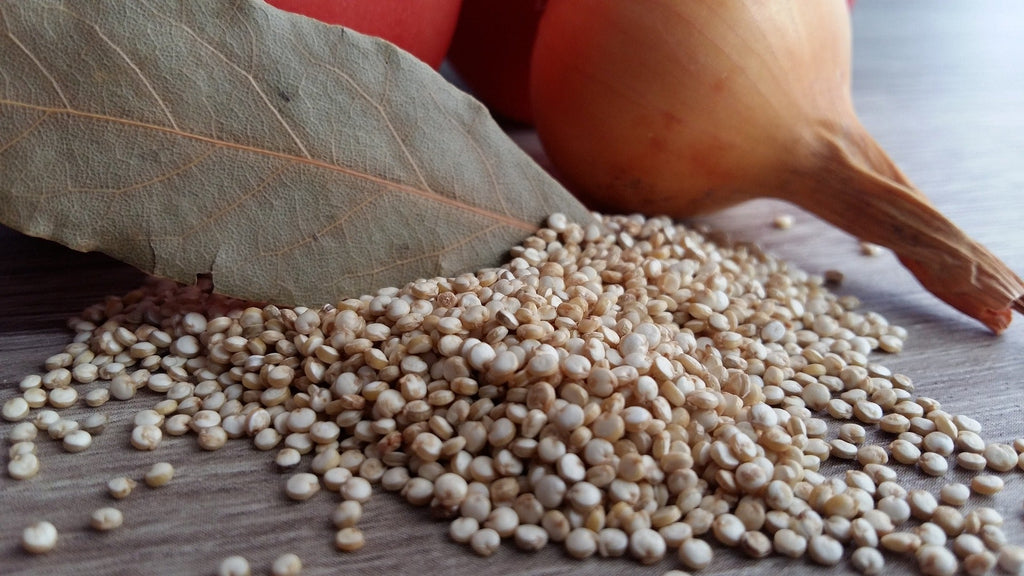DIY long term food storage is essential to food security for emergencies. There are so many different types of food you will need to ensure you and your family will be able to thrive under any circumstance, and quinoa is one of them!
Storing grains, rice, pasta, beans, oats, and lentils are by far a prepper favorite because they can easily be stored long-term. However, it is important to consider that every food item has different moisture and fat content, which means they all have a different shelf life. Quinoa is no exception to this.
You should incorporate quinoa into your long-term food storage plan. This grain is a staple food item in several regions around the world. Not only is quinoa an essential component to several dishes, but it offers great health benefits. This nutritious grain will help you keep your family healthy during an emergency, so you shouldn’t skip out on storing it long-term.
But do you know how to store quinoa long-term? Do you know the shelf-life of different types of quinoa? These are important questions that need to be addressed before you start stocking up.
In this blog, we will answer these questions for you. Let’s get started!

Reasons Quinoa Goes Bad
- The breakdown of quinoa happens due to exposure to extensive heat. The oils in quinoa become rancid in the heat, causing it to lose its flavor and nutrition.
- Exposure to moisture can cause the growth of mold in quinoa. It can also lead to bacterial growth, which makes quinoa unsafe to eat.
- Nutrients degrade after oxygen exposure, and exposure to air also causes the rancidity of fats.
- Exposure to UV light degrades the nutrients of quinoa, so storing your quinoa in a light blocking container is essential to maximizing its shelf life.
- Lastly, moths, rodents, and weevils infest quinoa. This makes it unsafe to eat.
Although there are many elements that can spoil quinoa, you can effectively extend the shelf life of your quinoa by storing it in a cool, dark, and dry place.
Shelf-life of Different Types of Quinoa

- Uncooked Quinoa: The shelf life of uncooked quinoa is about 2-3 years. This shelf-life can be achieved only when it is stored in a cool, dark, and dry place. However, if it is stored in a warm and humid place, the shelf-life is only 6 months. The fats can go rancid very quickly in a warm place.
- Black Quinoa: This type of quinoa will not go rancid as quickly as other types of quinoa. Black quinoa has less fat, so it takes much longer for it to become rancid. Also, the abundance of antioxidants act as a preservative. All in all, if you are looking for a long-term storage option, black quinoa is the best choice.
- Red and White Quinoa: This type of quinoa has a high-fat content, so it goes rancid more quickly. The shelf life is much shorter compared to black quinoa, so it is a better option for short-term storage. We suggest you avoid trying to store this type of quinoa long-term.
- Quinoa Flour: Some people like to make quinoa flour. However, this will increase the surface area, thus increasing the exposure to air. This increases the possibility of rancidity and spoilage. So, quinoa flour won’t last as long as whole quinoa.
- Quinoa for Sprouting: Do you want to sprout or plant quinoa? If so, you should know that planting or sprouting quinoa can be affected by humidity and a warm atmosphere. If you are going to store quinoa for sprouting, be sure to store a stock that can be rotated for 6-10 months.
Long-Term Storage Options for Quinoa

Mylar Bags with Oxygen Absorbers
Storing quinoa in airtight containers such as Mylar bags with oxygen absorbers is one of the best ways to increase this grains overall shelf-life.
Oxygen absorbers remove any oxygen from the containers which reduces the chances of rancidity. However, if not used or rotated timely, the quinoa will degrade and spoil.
Oxygen absorbers also reduce the chance of pest infestation. Most quinoa will be infested with pests during transport, but storing your quinoa in Mylar bags with oxygen absorbers will stave off insect growth.
Freezer
Storing quinoa in the freezer is another great option, and there are a few reasons why. Freezing temperatures avoid reaction with oxygen, thus preventing rancidity. Freezing temperatures also reduce the chances of bacteria and mold growth. Lastly, freezing temperatures reduce insect infestation.
Freezing your quinoa is the best option if you have enough freezer space and want to store it long-term, as quinoa will stay fresh in the freezer indefinitely.
Bottom Line

Quinoa is a great addition to your long-term food storage plan. However, quinoa needs extra care when stored. You should note the shelf life of different types of quinoa as you strategize your long-term food storage plan.
This grain can be stored in Mylar bags with oxygen absorbers or in a freezer. If you are looking to store quinoa in Mylar bags, you can check out Wallaby Goods best-selling Mylar bag bundles. Their bundles include Mylar bags, oxygen absorbers, and sticker labels to keep your stockpile organized.
Wallaby’s puncture resistant, 5Mil thick bags are airtight, moisture-proof, and light-blocking, so preppers everywhere trust that they are the best choice for their long-term food storage needs.
Head to our website to see why thousands of preppers rave about Wallaby Goods Mylar bags.
SHARE:





